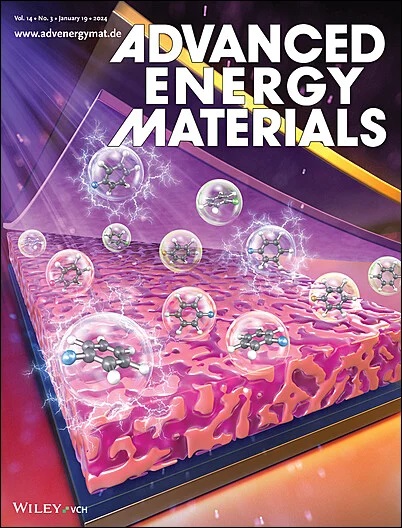A Medium-Entropy NASICON Cathode for Sodium-Ion Batteries Achieving High Energy Density Through Dual Enhancement of Voltage and Capacity
IF 24.4
1区 材料科学
Q1 CHEMISTRY, PHYSICAL
引用次数: 0
Abstract
Na3V2(PO4)3 (NVP) is recognized for its promising commercialization potential as a sodium-ion battery (SIB) cathode, due to its thermodynamic stability and open structure. However, the limited energy density remains a major obstacle to further advancement of NVP. Herein, a medium-entropy NASICON Na3.3V1.4Al0.3(MgCoNiCuZn)0.06(PO4)3 (NVAMP-0.3) is designed by introducing Al3+, Mg2+, Co2+, Ni2+, Cu2+, and Zn2+ to regulate configurational entropy. These NVAMP-0.3 achieve an elevated average operating voltage (3.33 V) and high capacity (138.1 mAh g−1, based on 2.3 Na+) through V3+/V4+/V5+ multi-electron reactions. By simultaneously enhancing capacity and voltage, NVAMP-0.3 exhibits an impressive energy density of 460 Wh kg−1. Furthermore, NVAMP-0.3 demonstrates excellent low-temperature tolerance with a capacity retention rate of 94.6% after 300 cycles at −40 °C. In situ XRD unveils the underlying cause of the unique phenomenon where the solid-solution reaction accounts for the faster electrochemical reaction kinetics of the V4+/V5+ compared to the V3+/V4+ redox. DFT calculations indicate that NVAMP-0.3 possesses superior electronic conductivity and reduced Na+ migration energy barriers. A pouch cell assembled with the NVAMP-0.3 cathode and hard carbon anode exhibits highly stable cycling (89.3% after 200 cycles at 1 C). This study provides valuable insights into developing NASICON-type cathodes with high energy densities for SIBs.

求助全文
约1分钟内获得全文
求助全文
来源期刊

Advanced Energy Materials
CHEMISTRY, PHYSICAL-ENERGY & FUELS
CiteScore
41.90
自引率
4.00%
发文量
889
审稿时长
1.4 months
期刊介绍:
Established in 2011, Advanced Energy Materials is an international, interdisciplinary, English-language journal that focuses on materials used in energy harvesting, conversion, and storage. It is regarded as a top-quality journal alongside Advanced Materials, Advanced Functional Materials, and Small.
With a 2022 Impact Factor of 27.8, Advanced Energy Materials is considered a prime source for the best energy-related research. The journal covers a wide range of topics in energy-related research, including organic and inorganic photovoltaics, batteries and supercapacitors, fuel cells, hydrogen generation and storage, thermoelectrics, water splitting and photocatalysis, solar fuels and thermosolar power, magnetocalorics, and piezoelectronics.
The readership of Advanced Energy Materials includes materials scientists, chemists, physicists, and engineers in both academia and industry. The journal is indexed in various databases and collections, such as Advanced Technologies & Aerospace Database, FIZ Karlsruhe, INSPEC (IET), Science Citation Index Expanded, Technology Collection, and Web of Science, among others.
 求助内容:
求助内容: 应助结果提醒方式:
应助结果提醒方式:


